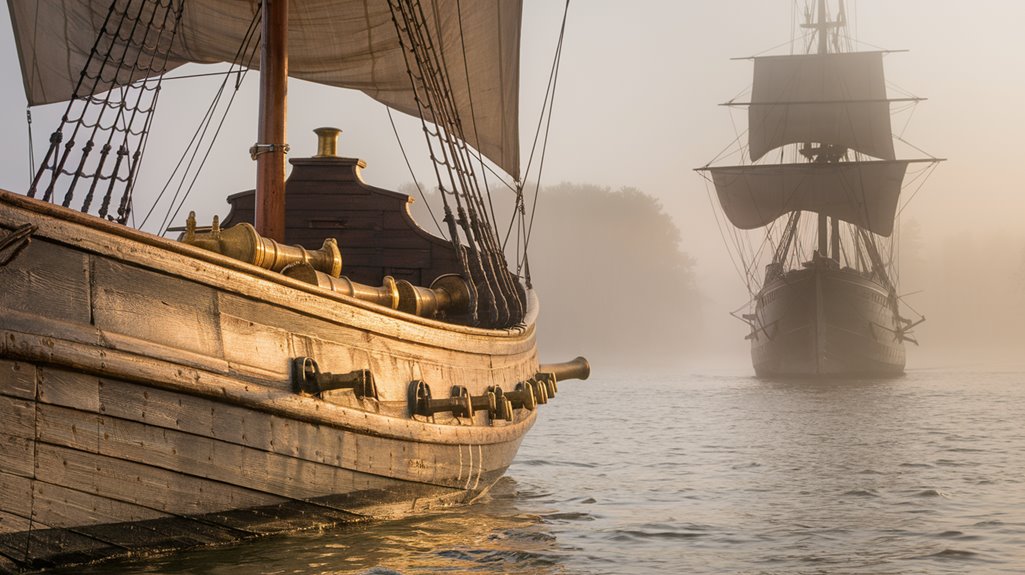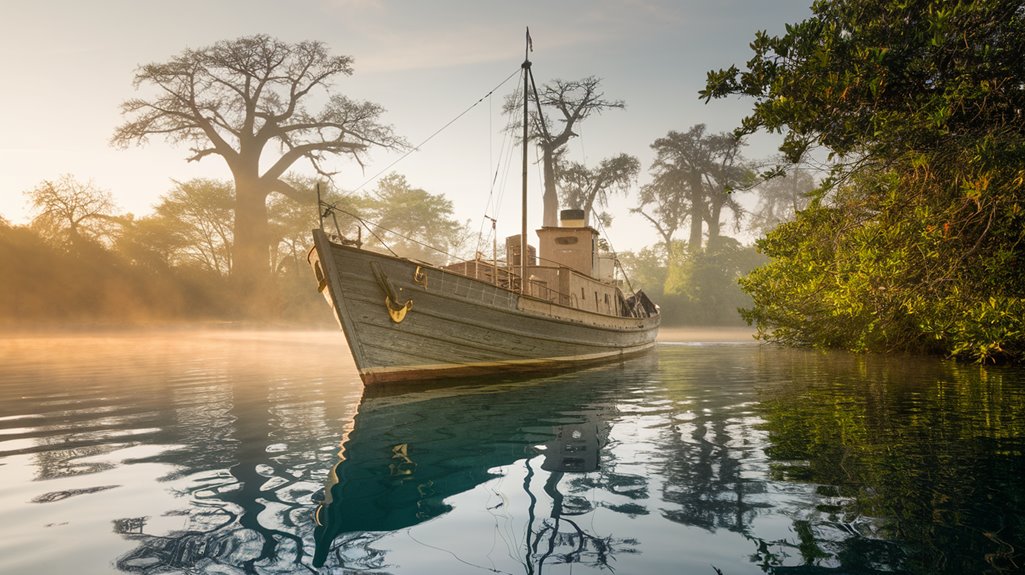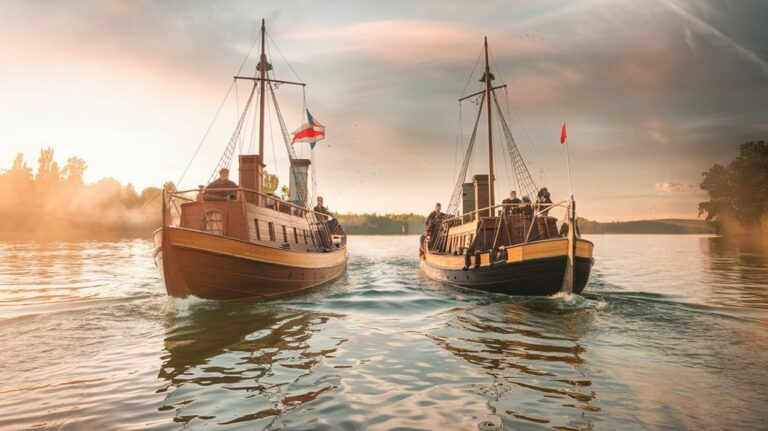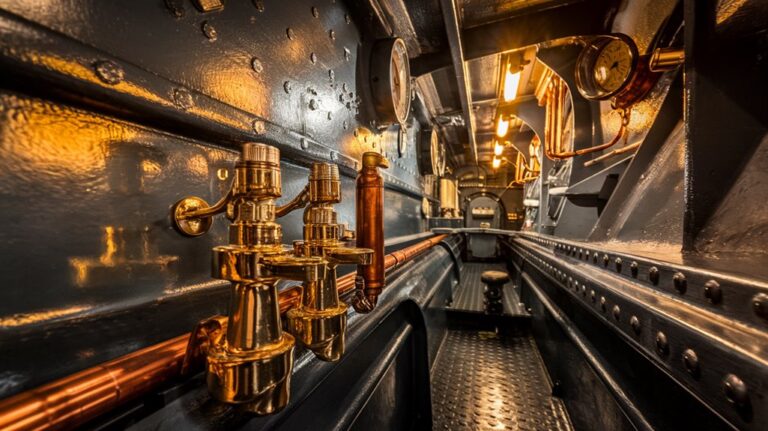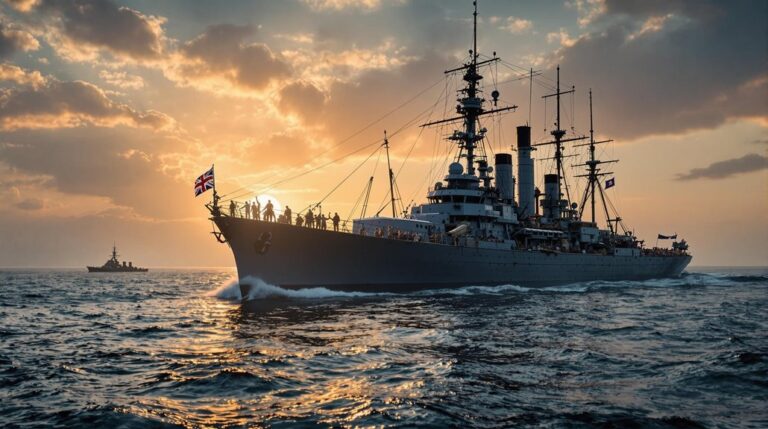The Mini Naval War Over One Tiny Lake
Picture a vast African lake shimmering under the equatorial sun, its waters concealing an unlikely World War I battleground. You've probably never heard of Lake Tanganyika's naval showdown, where British motorboats squared off against German warships in what seemed like a David versus Goliath scenario. But don't let the lake's remote location fool you—this forgotten theater of war changed the course of colonial Africa and proved that sometimes, the smallest vessels can make the biggest waves.
Setting the Stage: Lake Tanganyika's Strategic Value
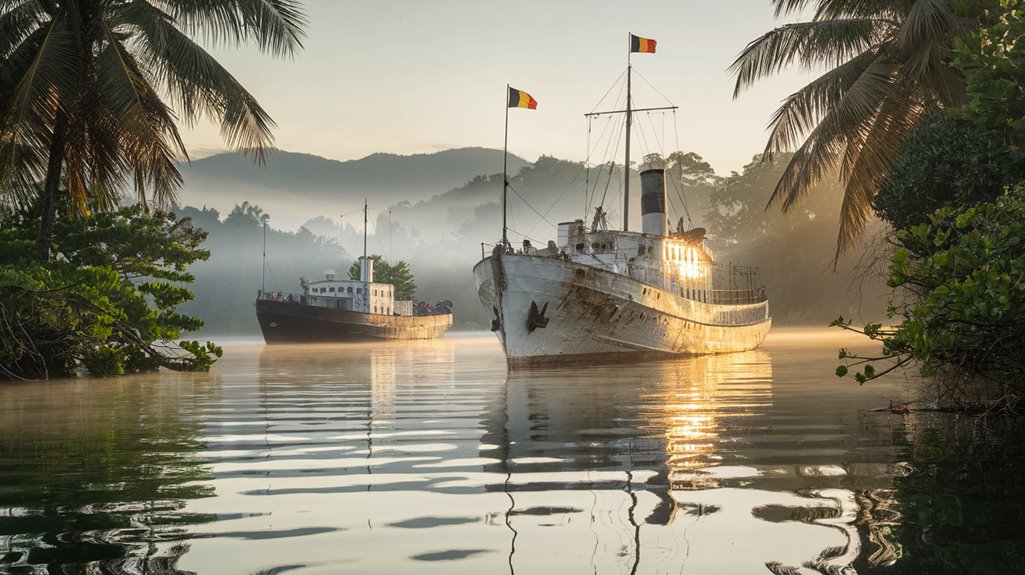
While many lakes serve as essential resources for their surrounding regions, Lake Tanganyika stands out as an exceptional powerhouse of economic and strategic importance in Central Africa.
You'll find this massive waterbody serving as a lifeline for four nations, containing more freshwater than all five North American Great Lakes combined.
The lake's rich biodiversity supports over 45,000 people who depend directly on its fisheries, operating from nearly 800 sites along its 1,900-kilometer shoreline.
Recent climate change impacts have led to concerning surface temperature changes that threaten the lake's delicate ecosystem balance.
Beyond fishing practices, it's a vital transportation corridor that facilitates trade in agricultural products like coffee, cotton, and sisal between Tanzania, Burundi, DR Congo, and Zambia. Similar to ancient tales of floating vegetation mats, portions of Lake Tanganyika's surface occasionally feature drifting plant masses that create temporary islands.
What's more, the lake provides up to 40% of the local population's protein needs, making it an indispensable resource for food security in the region.
The British Plan to Challenge German Control
As Lake Tanganyika's economic significance grew, its military value caught the attention of warring powers during World War One.
The Germans aimed to use the lake's control to weaken Allied forces on the European front.
You'd have witnessed the Germans firmly in control, with their impressive fleet including the Hedwig Von Wissman and Kingani patrolling the waters.
Like Admiral Raeder's later emphasis on naval superiority, the Germans recognized the strategic importance of controlling key waterways.
British ingenuity emerged through John R. Lee, a big-game hunter who proposed an audacious plan to challenge German dominance.
Despite initial skepticism from naval officers, the British approved his daring scheme. The plan showcased remarkable logistical hurdles: dismantling armed riverboats, shipping them to South Africa, and hauling them across challenging terrain to reach the lake.
They'd need to construct roads through the bush just to transport the vessels. With the Germans now deploying their massive Graf von Goetzen, capable of carrying 1,000 troops, time was of the essence.
A Journey Through the African Jungle
Through dense equatorial rainforest and sweltering temperatures hovering around 28°C, the British expedition faced a grueling journey to Lake Tanganyika.
You'll find that jungle exploration in this region presents unique challenges, with heavy afternoon downpours and humidity that can quickly drain your energy.
As you traverse the Congo rainforest, you're surrounded by incredible biodiversity conservation zones, home to over 600 tree species and 10,000 animal species.
The landscape you're crossing stores an estimated 39 billion tons of carbon, making it essential for fighting climate change.
You'll encounter a variety of ecosystems, from dense rainforest to grasslands, all teeming with life. Writers often capture these landscapes through vivid descriptions to transport readers into the heart of the jungle.
Watch for forest elephants and gorillas – they're constantly reshaping the environment by feeding on smaller trees, maintaining the jungle's delicate balance.
Local communities face ongoing challenges from illegal logging activities, which threaten both the forest's sustainability and wildlife populations.
Naval Battles on African Waters
Once tranquil Lake Tanganyika became a fierce battleground during World War I, where British, Belgian, and German naval forces fought for strategic control of Africa's longest lake.
You'd be surprised to learn that naval tactics here mirrored those of larger maritime conflicts, with the Germans initially dominating using their well-armed vessels like the Hedwig von Wissmann and Kingani. Like the large outrigger canoes used in the Sakalava invasions, these vessels were specifically adapted for African waterways. This conflict demonstrated the same decisive battle approach seen in major naval engagements of World War II.
The British countered with two small but mighty motor boats, Mimi and Toutou, while the Belgians brought innovative African maritime warfare by deploying floatplanes for reconnaissance and bombing missions.
In a series of dramatic encounters, these Allied forces systematically defeated the German ships, forcing their withdrawal from the lake.
The Germans' pride, the Graf von Götzen, assembled from thousands of parts transported through the wilderness, ultimately couldn't maintain their control over these strategic waters.
Belgian Support and Air Operations
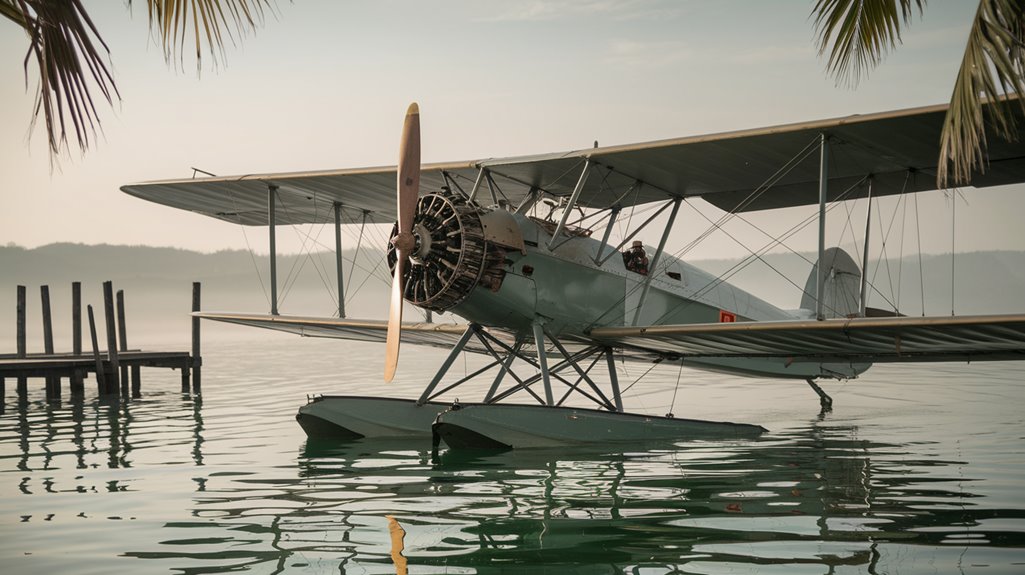
While most people associate WWI aerial combat with the Western Front, Belgium's air operations played an important role in both European and African theaters.
You'll find that Belgian airpower evolved rapidly throughout the war, starting with just six squadrons in 1916 divided between observation and fighter roles. King Albert I personally commanded all aerial operations as part of his role as commander-in-chief.
Belgian aerial reconnaissance began as early as August 1914, when pilots monitored German troop movements along the border.
 meteorological observations became crucial to their air warfare effectiveness.
meteorological observations became crucial to their air warfare effectiveness.
The Groupe de Chasse Jacquet, formed in 1918, showcased Belgium's growing air strength with its fleet of Camels, Spads, and Hanriots.
Working alongside British and French forces, Belgian crews excelled in air-to-ground photography and provided vital support for Allied ground advances during the war's final months.
The Final German Stand and Allied Victory
As Allied forces launched their final offensive in 1945, the German defenses around Lake Comacchio crumbled under a coordinated assault.
You'd have witnessed the Special Boat Service's daring operations across the lake, where they captured strategic islands and silenced German machine-gun positions. The British 56th Division's capture of "the Wedge" proved essential to Allied strategies, leading to the surrender of 700 German troops and establishing critical positions north of the Reno River. On April 9, nearly 2,300 Allied bombers conducted devastating attacks against German positions in the region. Just as the U.S. First Army was breaking out of the Remagen bridgehead in Germany, these Italian operations were intensifying.
- Major Anders Lassen's heroic actions earned him a posthumous Victoria Cross
- German defenses lost 800 prisoners during these operations
- The capture of Lake Comacchio's islands created launching points for further advances
These victories contributed to the broader collapse of German resistance across Italy, forcing their retreat toward the Austrian frontier and marking the beginning of the end in the Italian Campaign.

